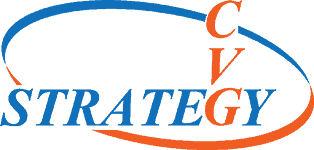Product Reliability Testing and Evaluation
What is Product Reliability Testing and Evaluation?
Product reliability testing is an integral part of reliability engineering. This test and evaluation can occur at any phase of the development cycle. It assesses a product ability to perform all of its functions as designed throughout the entirety of its intended life. The goal of this testing is to identify potential reliability issues as early as possible.
Product reliability testing is important in both commercial and defense product development. It also plays a critical role in maintenance by identifying and mitigating production failures. Each market sector has unique approaches to achieving reliability.
CVG Strategy has expertise in testing and evaluation for reliability. We provide, pretest evaluation, EMI/EMC consulting services, test program documentation, test program management, and test witnessing. We can provide on site support for your reliability test program. This ensures properly performed testing and vital data collection. In addition, it also provides an alternative to travel of product development team members.

Product Life Cycle Management
Product Life Cycle Management begins in the design stage of product development. It involves the identification of all environmental stressors likely to be encountered and their severities. This results in the selection of appropriate test methodologies, manufacturing processes, and Quality Management strategies.
Test and evaluation can begin as soon as design is initiated . This can include computer modeling and prototype design verification testing. These tests will typically target perceived design weaknesses. As a result, any test data that indicates required redesign can occur as soon as possible.
Types of Developmental Product Testing
Product reliability is dependent on a number of factors. Each of these factors therefore require specific test methodologies. During the product development phase these methods include:
- Climatic testing that replicates environmental conditions encountered during storage and operation.
- Dynamic testing that replicates forces encountered during transportation, maintenance, and operation.
- Electrical testing that replicates disturbances and loads on the product when operated in its intended application.
- Electromagnetic Interference (EMI) testing that evaluates a products susceptibility to radio frequency energy and Electrostatic Discharges (ESD)
- Electromagnetic Compatibility (EMC), testing that verifies that the product does not emit excessive radio frequency energy that might effect the proper operation of other equipment.
- Highly Accelerated Life Test (HALT) that determines the operating and destruct limits of a design.
- Wireless Coexistence testing that evaluates the ability of a wireless device to operate in an environment with many other devices.
Types of Production Testing
Production testing includes a wide array of screening and acceptance test methods for electronic products. These methods ensure a high quality of manufactured product by reducing infant mortality.
Highly Accelerated Stress Screen (HASS) testing is a method of production testing. It can screen failures introduced during the manufacturing process and ensure product quality.
The goal of a HASS test is to induce failure modes that can be inherent or introduced in the production process. Thereby, this testing can find failures that may have gone undetected during burn-in testing. This can reduce warranty costs.
Maintenance and Reliability Testing
Proper maintenance of equipment can reduce down time. This results in increased productivity and reduced costs. Condition based maintenance can improve maintenance by using real time data to evaluate performance. This evaluation can thereby detect symptoms that could lead to failure and allow for scheduling of repairs before a failure occurs. When implemented on manufacturing equipment this can add great value .
Implementation of Reliability in Various Product Sectors

Defense
Defense products require rigorous reliability testing. This testing occurs at various phases of integration. Product developers are required to perform developmental testing to verify their product’s capabilities on production units. This testing includes environmental, electrical, and EMI/EMC methods.
MIL-STD-810 is a standard for environmental testing (climatic and dynamic) developmental testing. It contains guidelines for development of Life Cycle Environmental Profiles and Environmental Issues and Criteria Lists. These processes are engineering management tools. They provide methods for developing a tailored evaluation program.
CVG Strategy can help you access these powerful tool and avoid program delays. We can provide training for your product management team with our MIL-STD-810 Training Webinars. CVG Strategy has assisted many developers of defense equipment define suitable requirements for their test programs. We also offer a complete collection of MIL-STD-810 and MIL-STD-461 EZ-Test Plan Templates.

Vehicle
Products developed for road vehicles face demanding reliability requirements. Vehicle manufacturers usually specify custom validation testing. Many of these specifications, however, are derived from ISO 16750.
ISO 16750 is comprised of five different parts that contain evaluation methods for electrical, mechanical, climatic, and chemical stresses that a product can expect to experience. Severities of these stresses are based on location or actual measured data from installed environments. The standard also contains information for calculating characteristic reliability values on the basis of test data.
CVG Strategy has assisted vehicle component manufacturers develop highly reliable products that meet or exceed customer requirements. We also can provide expertise in Commercial Testing for Certification, Aerospace, and Ingress Protection.
How Can We Help?
Take a look around our site and contact us for more information on how we can help you meet your challenges.
Latest News
Nicaragua Export Restrictions Increased by U.S.
Nicaragua export restrictions have been increased by both the Directorate of Defense Trade Controls (DDTC) and the Bureau of Industry and Security (BIS) as of


